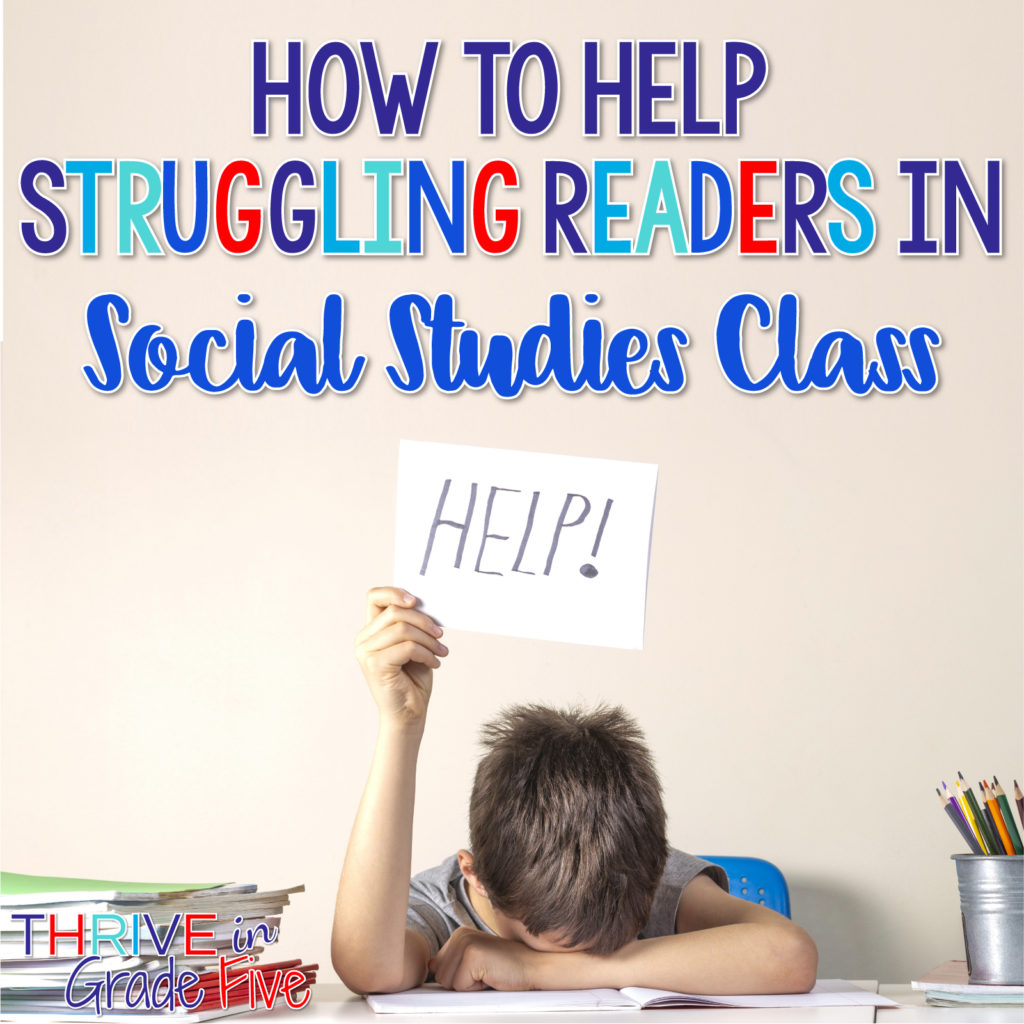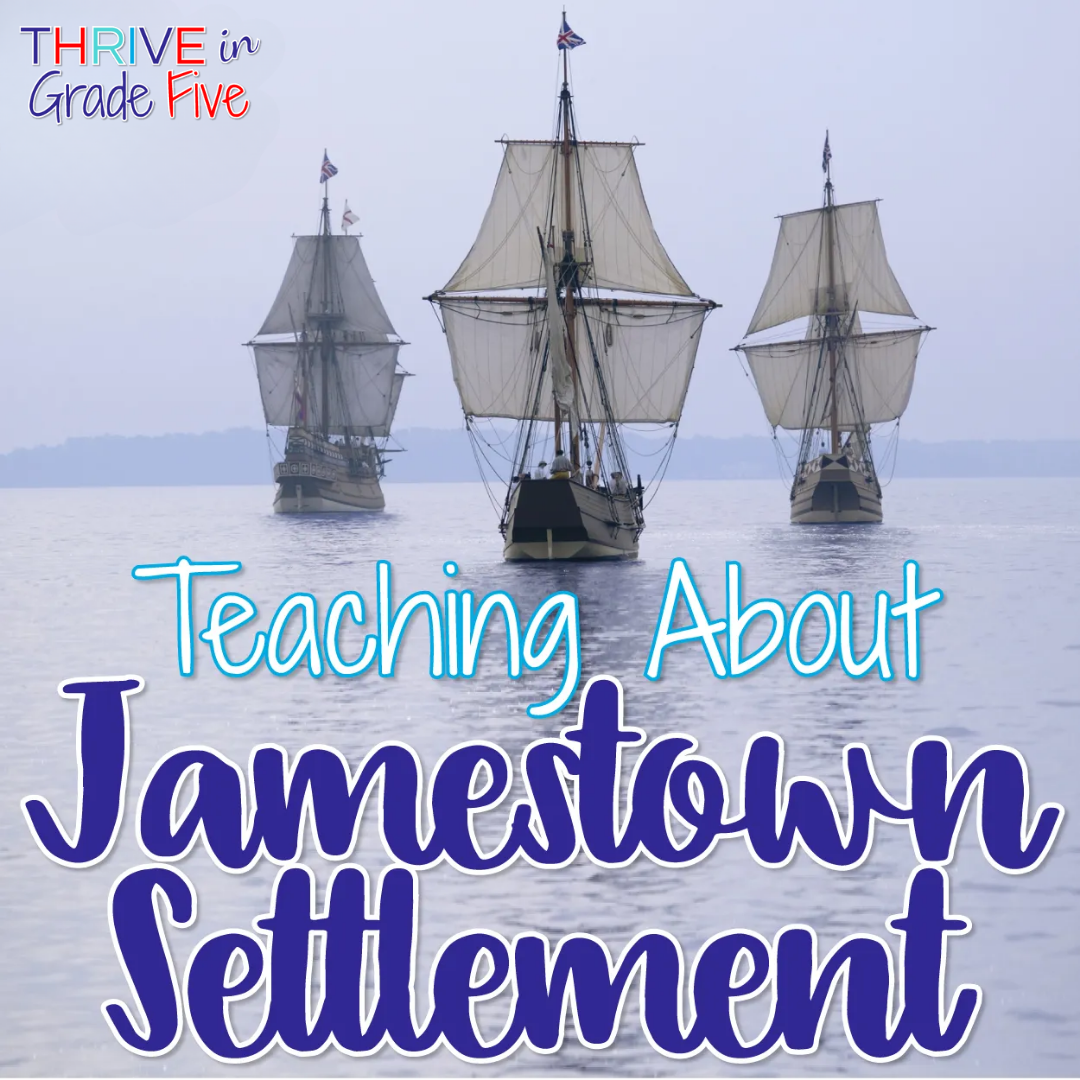If you are looking for ways to help struggling readers in your social studies class, this blog post is packed with helpful tips!
As you know, students today have more to learn than ever before.
Throughout the school day, they receive instruction in reading, writing, math, science, and social studies.
Students also practice spelling words, attend P.E. or music class, and might even participate in band instruction.
Beyond these ‘subjects’, students also take part in lessons about internet safety, have fire drills, visit the library, and maybe enjoy a bit of recess.
This is an elementary description, but you get the idea.
Students today have a LOT on their plates and when they struggle with reading, it can all just be too much.
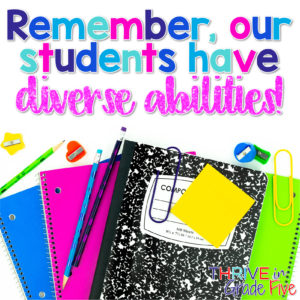
Our Students Have Diverse Abilities
As teachers, we know that students do not arrive in our classrooms with the same skills and strengths.
Some are great readers, while others are wizards in the math department.
Another truth is that, whether the student is in fifth grade or eighth grade, his reading ability may not match his age.
Further complicating things, most social studies textbooks are written above grade level.
Even with these challenges, it is our job to teach the curriculum to all students, regardless of their ability to read.
So how do we accomplish this task? What strategies can we utilize to support struggling readers within the social studies classroom?
Keep reading to find out!
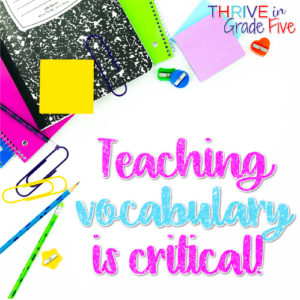
Vocabulary is a Critical Part of Social Studies!
Best practices in vocabulary instruction will benefit all learners, not just struggling readers.
Say goodbye to the days when students were asked to write a vocabulary word and look up the meaning in the dictionary – very ineffective!
When teaching vocabulary, it’s important to remember that ‘a picture is worth a thousand words.’
Every vocabulary lesson should include pictures, drawings, or sketches.
Comprehension and memory improve significantly when combining pictures and text versus using text alone.
Front-Loading Vocabulary Words
Additionally, struggling readers will benefit from front-loading vocabulary words prior to the lesson.
Front-loading vocabulary words involves introducing critical vocabulary before students read the informational text.
Front-loading vocabulary is a huge help for students because they will already know the new words when they reach them in the text. This is such a confidence and comprehension builder!
The extra instructional time used is so worth it because this will help students to gain a deeper understanding of the word and its relevance to the lesson.
Fun vocabulary activities can make all the difference! Try this one: Jamestown Vocabulary Review Activities
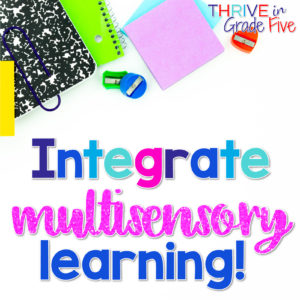
Multisensory Learning
Allowing students to access multiple senses while learning will help struggling readers in your social studies classes.
Including pictures with vocabulary words and definitions is important – but why stop there?
With current technology and ample online resources, we can find short videos, gifs, and memes to address vocabulary words, as well.
Depending on students’ ages and ability levels, teachers can supply these visuals, or invite students to find meaningful media on their own.
Learning increases when emotion and creativity are involved!
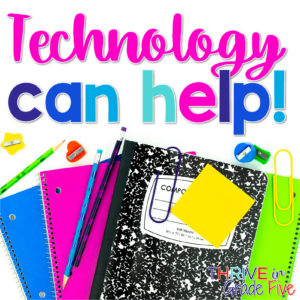
Do They Have to ‘Read’ It?
Again – technology! Many adults ‘read’ books by listening to them as we walk, drive our car, or clean the house.
Audio books have revolutionized the way we get information in our modern era.
Fortunately, textbook publishers realize the value of a read-aloud, and many have developed online learning platforms that include audio of the chapters.
Other features of digital curriculum might include short videos, games, and other methods of interacting with the content.
If you are looking for ways to integrate more technology, especially Google Apps, into your classroom, check out this post: How to Use Google Resources in Upper Elementary.
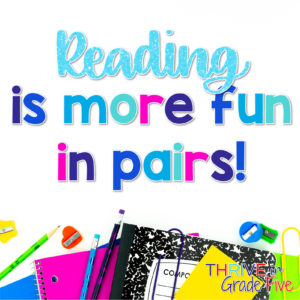
Partner Reading in Social Studies Class
Other than reading informational text aloud, we can use additional strategies for supporting struggling readers.
Partner reading improves engagement, aids in fluency practice, and helps in monitoring accuracy.
With a struggling reader, the teacher could start out as the partner, gradually transitioning the student to a student partnership as time goes on.
Partner reading usually involves students taking turns on pages, but they could also alternate paragraphs or sections, depending on the text layout.
Another option is to read a portion aloud as the teacher, then mix in some choral reading.
In summary, students of all abilities will benefit as we continue to discover more about how the brain learns, and continue to develop innovative methods of teaching and learning.
We CAN make social studies and history accessible to all students!

